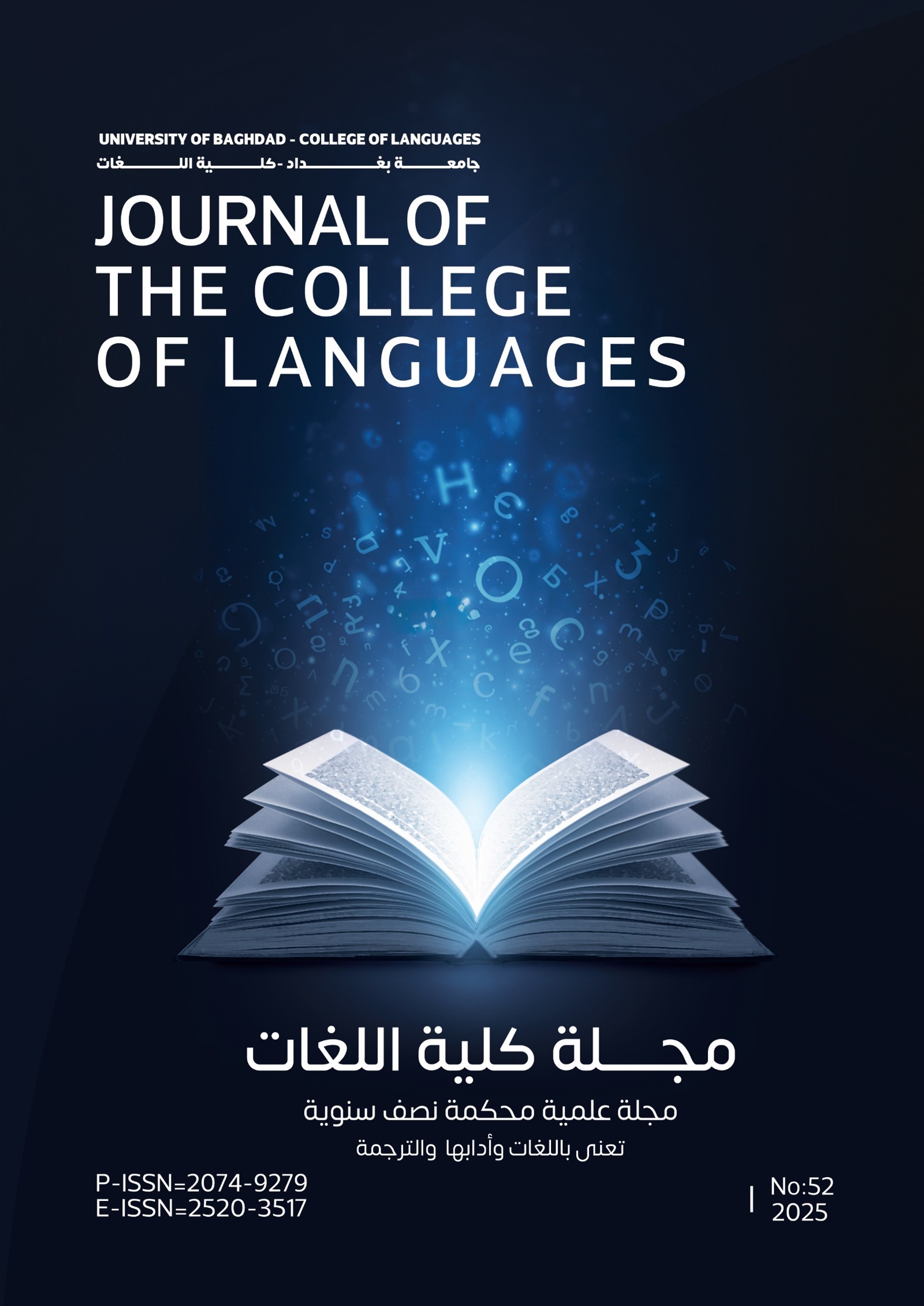Las formas no personales del verbo en español y su traducción al árabe Non-personal forms of the verb in Spanish and their translations into Arabic
Abstract
Las formas verbales: el infinitivo, el gerundio y el participio, son derivados verbales que se comportan como sustantivos, adverbios o adjetivos, respectivamente; aunque, dado su carácter verbal pueden también funcionar como verbos y, por tanto, como núcleos del predicado.
El presente trabajo presenta una visión general sobre las formas no personales del verbo en español. Se debe recordar que las formas no personales del verbo tiene funciones y valores dentro de la oración.
Este trabajo lo dividimos en dos partes: la primera presenta un breve marco teórico en que se explica las formas no personales del verbo y como se forman además de sus funciones.
Abstract
Each language has its own grammatical rules. Certain structural similarities among languages are just possible; a whole coincidence between two languages is impossible. Grammatical structure of Arabic differs, in the best part of it, from that of Spanish, particularly regarding tenses, aspects and morphological structures.
The current study tackles one of the morphological structures used in Spanish, the verb non-personal forms, i. e., the infinitive, active participle and passive participle which are non-personal and have no tense, i. e., they do not denote any reference to person or tense.
The main aim of this study is to show how these forms may be accurately and correctly translated into Arabic. These forms have functions and importance in the Spanish sentence, hence, this importance ought to be known in order to be translated correctly into Arabic.
The functions of these forms differ from the functions of the infinitive, active participle and passive participle in Arabic. Infinitive in Spanish is the noun of the verb. In Spanish, the infinitive of the verb 'travel', for instance, is 'travel'. Whereas the infinitive in Arabic is an utterance indicates an event which does not correspond to certain tense, such as the verb 'beat' whose infinitive form is 'beat'.
The active participle in Spanish functions as an adverb; the passive participle functions as an adjective. Both have grammatical functions and importance. In Arabic, the active participle and the passive participle are derivatives. The active participle is derived from the active verb to indicate the characteristics of the doer of the verb, such as, write: writer. The passive participle is derived from the passive verb to indicate the characteristics of the one who received the verb, such as, beat: beaten.
The present study is divided into two parts, the first of which view the theoretical aspect of the non-personal forms of the verb in Spanish with a brief introduction to the infinitive, the active participle and the passive participle in Arabic to show the differences between them in the two languages.
The second part shows the translation of these forms into Arabic. It tackles the grammatical importance which enables the translator to render them into Arabic correctly. The examples which include non-personal forms of the verb are adopted from (Rozario Techeras) by the Colombian novelist Georges Franco and their correct translation into Arabic.







